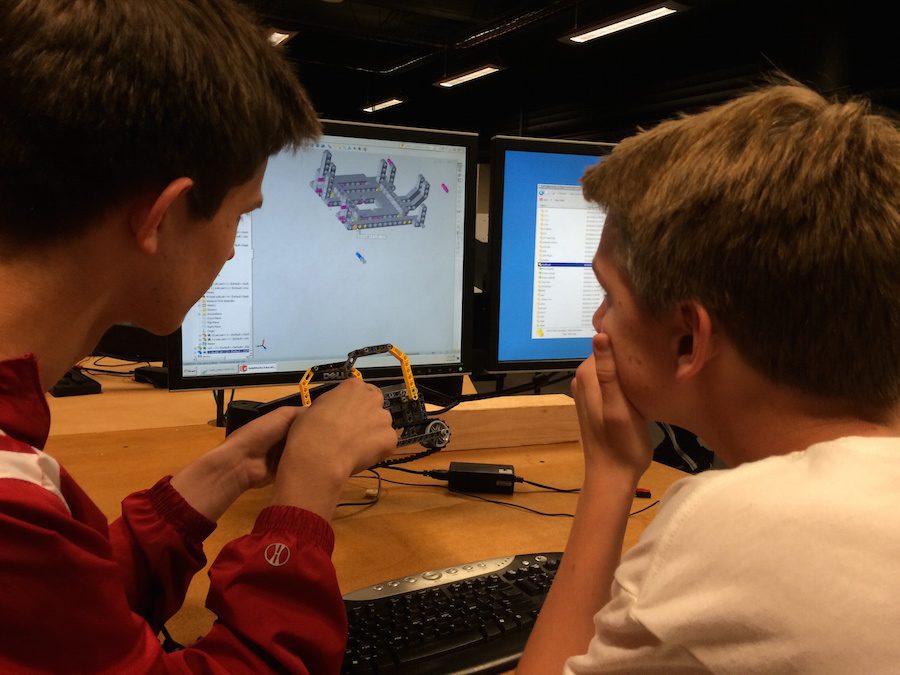ACS Program utilizes advanced technology to complete projects
The Advanced Competitive Science (ACS) program at BSM has been utilizing the technology of 3D printing in order to bring their designs to the next level. “I think it’s a new way of looking at workshop,” ACS teacher Ms. Kristen Hoogenakker said.
BSM’s 3D printer is made by the company Stratasys, which is headquartered in Eden Prairie. “I think it’s good to support those local companies. They were also one of the first major corporations to make 3D printers,” Hoogenakker said.
On April 12, BSM Engineering students visited the company to see some of the other printing technology they are working on. What was most interesting to students was the multi-material 3D printer. “You can actually mix the materials, you have a million different colors you can print in, and you have the ability to change the density of the material. I think that sort of application would actually be really beneficial for the Biomedical program,” Hoogenakker said.
The process of 3D printing is quite user-friendly. The ACS course uses a computer-aided design program (CAD) called Solidworks. “All you have to do is upload the file of your design. Basically it works like a big hot-glue gun. Like a really glorified, robotic hot glue gun,” Hoogenakker said.
Although the students do not get an opportunity to use the 3D printer until their 3rd year of engineering, even first year students have the opportunity to watch the printing take place. “I would like to get the Engineering 2 students more involved in 3D printing. But it is so much more expensive. For building the smaller robots, which they do in Engineering 2, it’s more cost and time effective to use laser cut parts,” Hoogenakker said.
Several students in the Advanced Competitive Science course have developed particular interest in the technology of 3D printing. Seniors Jacob Koch, Joseph Busch and Brandon Banks have all been working on designs for a scholarship competition done through Stratasys.
Each senior engineering student has spent many hours both in and out of school working with the printers and developing their designs. “It’s really cool to know that they have enough interest in what I teach to spend additional time outside of class when they have AP classes and other things going on–especially seniors, because they are dealing with college applications,” Hoogenakker said.
The ACS program prides itself on the independent and hands-on experience it provides for students. These three students have exemplified the opportunities that come from the process. “It has really allowed me to put more faith in them, and build trust and know that when they’re working on the big robot, they’re going to be able to do the work right the first time and come up with some really innovative ideas,” Hoogenakker said.
BSM hopes to expand its 3D printing program in upcoming years. One way to do so would be bringing this technology to the Biomedical Investigations program. “[A multi-material printer] has the ability to print at the exact density of bone, of muscle and skin, so that you can actually practice cutting through all of the different layers. If you are removing a tumor, that is something you can actually print a model of and use that application,” Hoogenakker said. In the future, the Engineering Department would like to see the entire student body have access to a 3D printer. “You wouldn’t have to be in engineering to use it. It would be really great to see what students come up with because it’s easy. It’s really user-friendly,” Hoogenakker said.
BSM strives to provide its students with up-to-date technology in order to show students how the world is advancing and therefore how students can be a part and help bring about those advances. “It’s providing them with opportunities that they wouldn’t necessarily have otherwise,” Hoogenakker said.






































![Teacher Lore: Mr. Hillman [Podcast]](https://bsmknighterrant.org/wp-content/uploads/2025/03/teacherlorelogo-1200x685.png)




